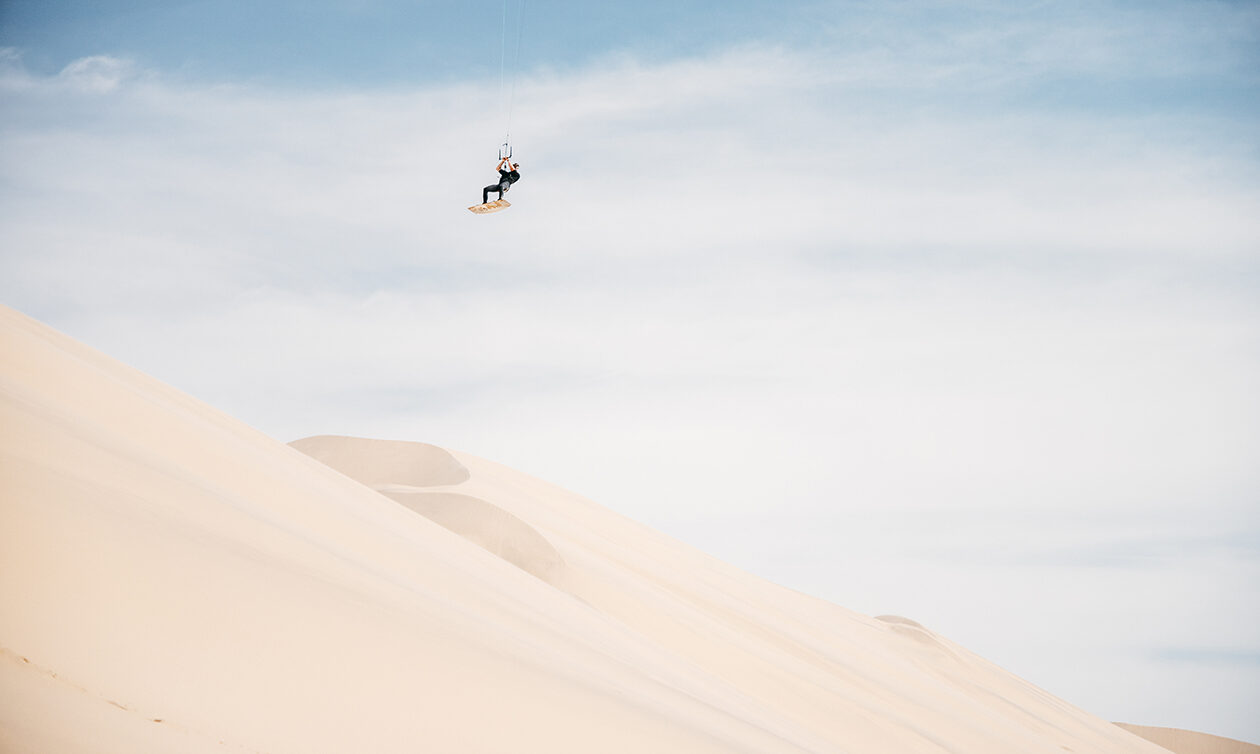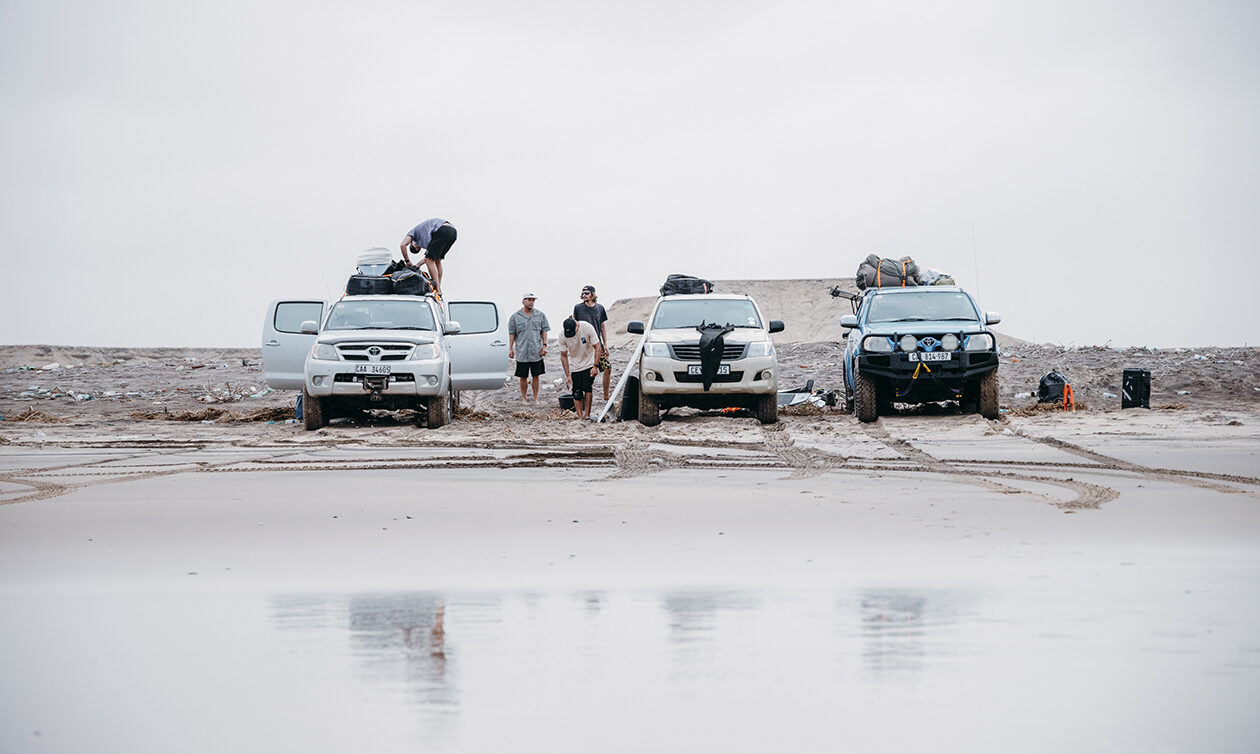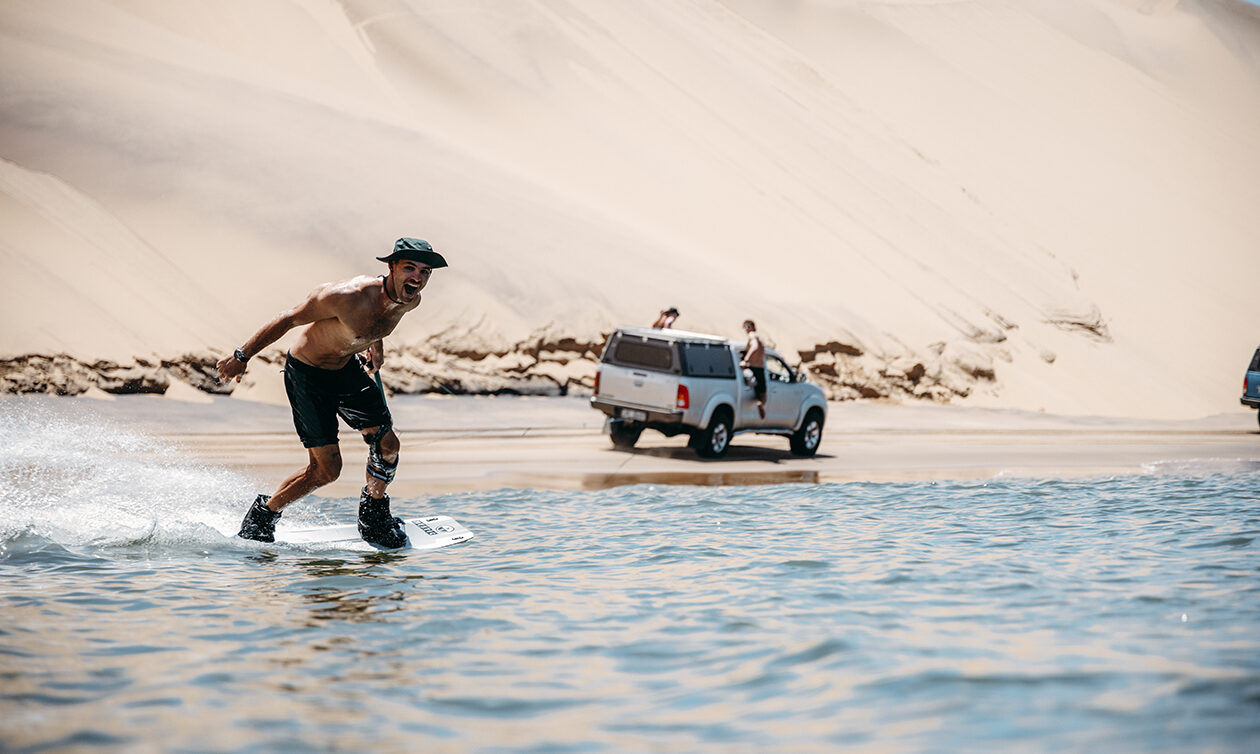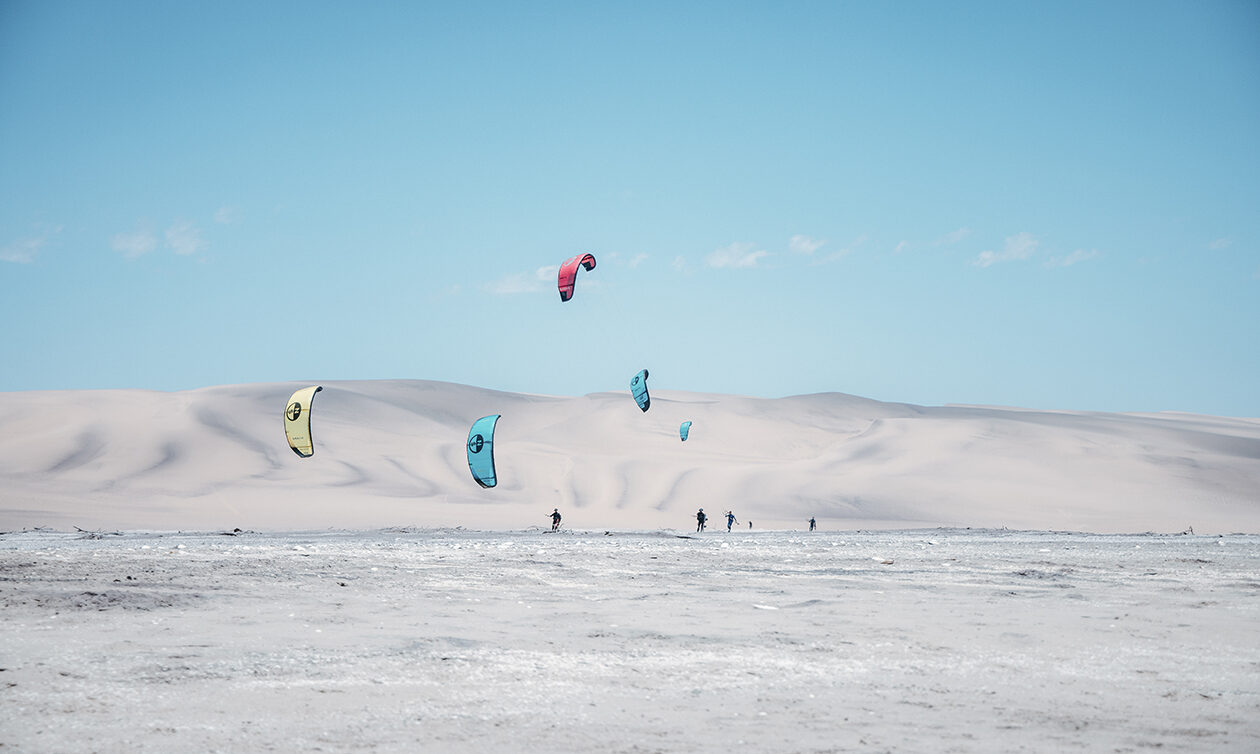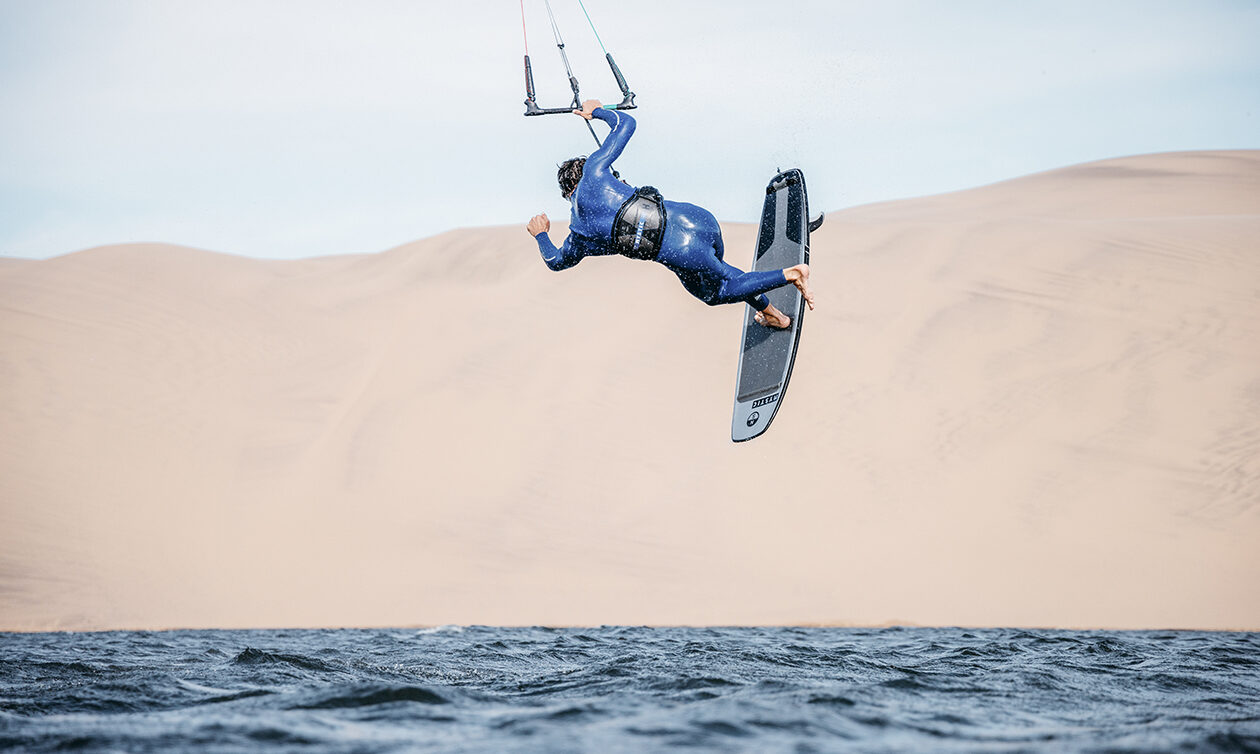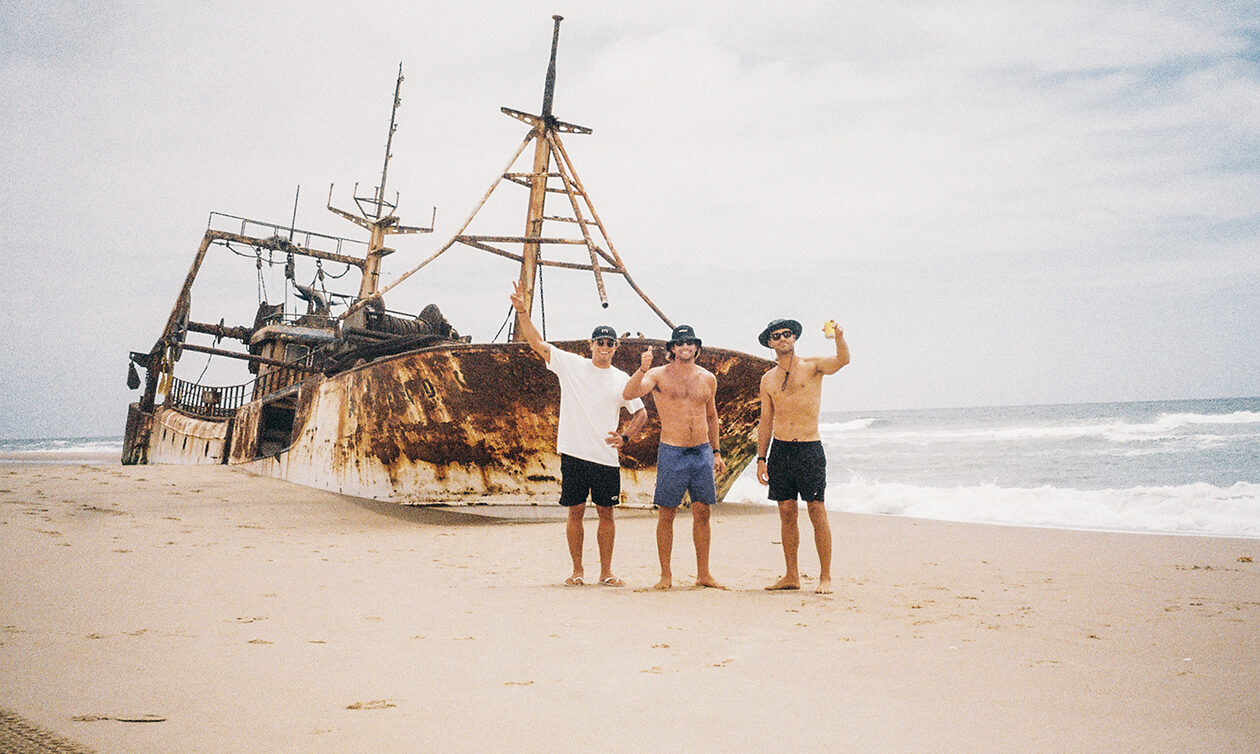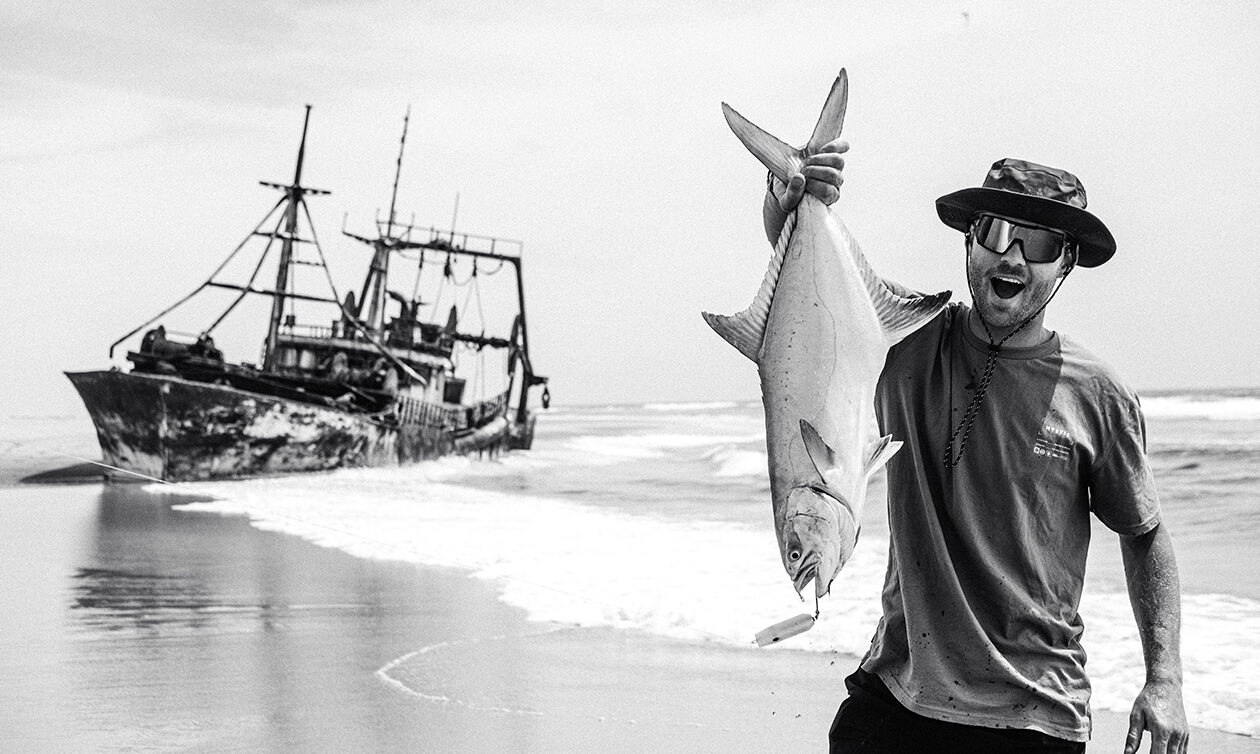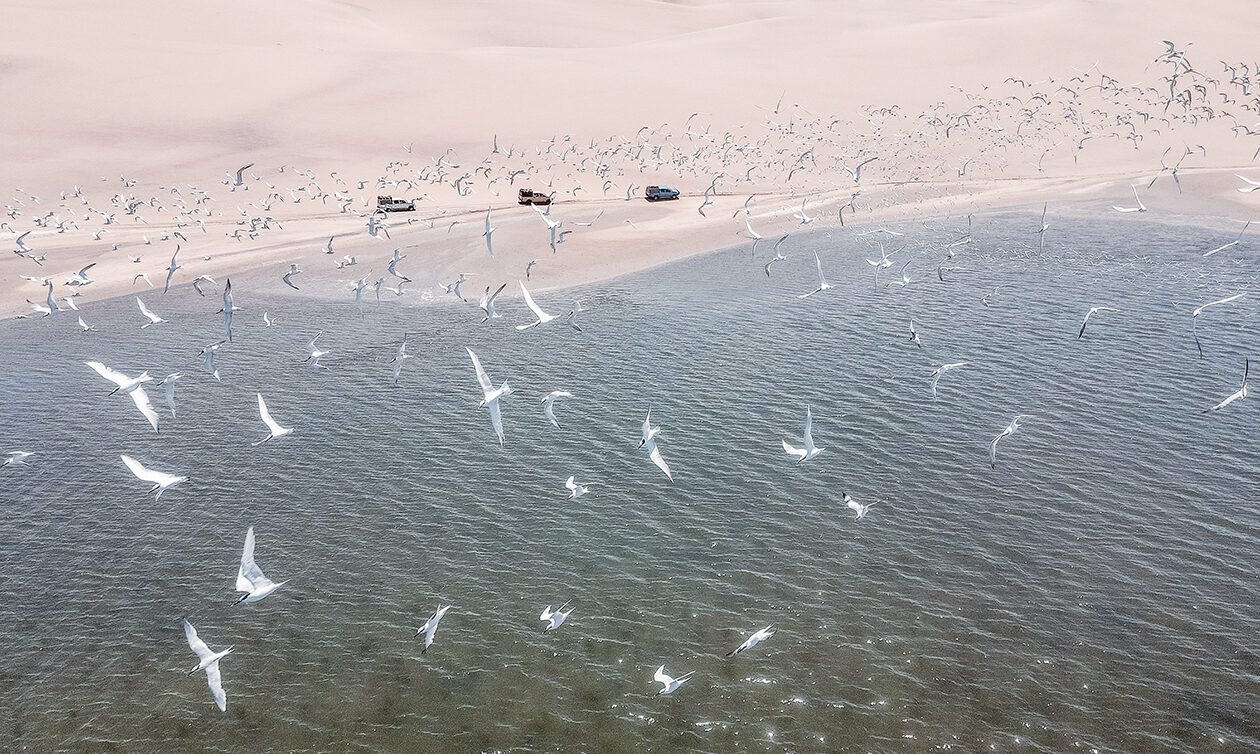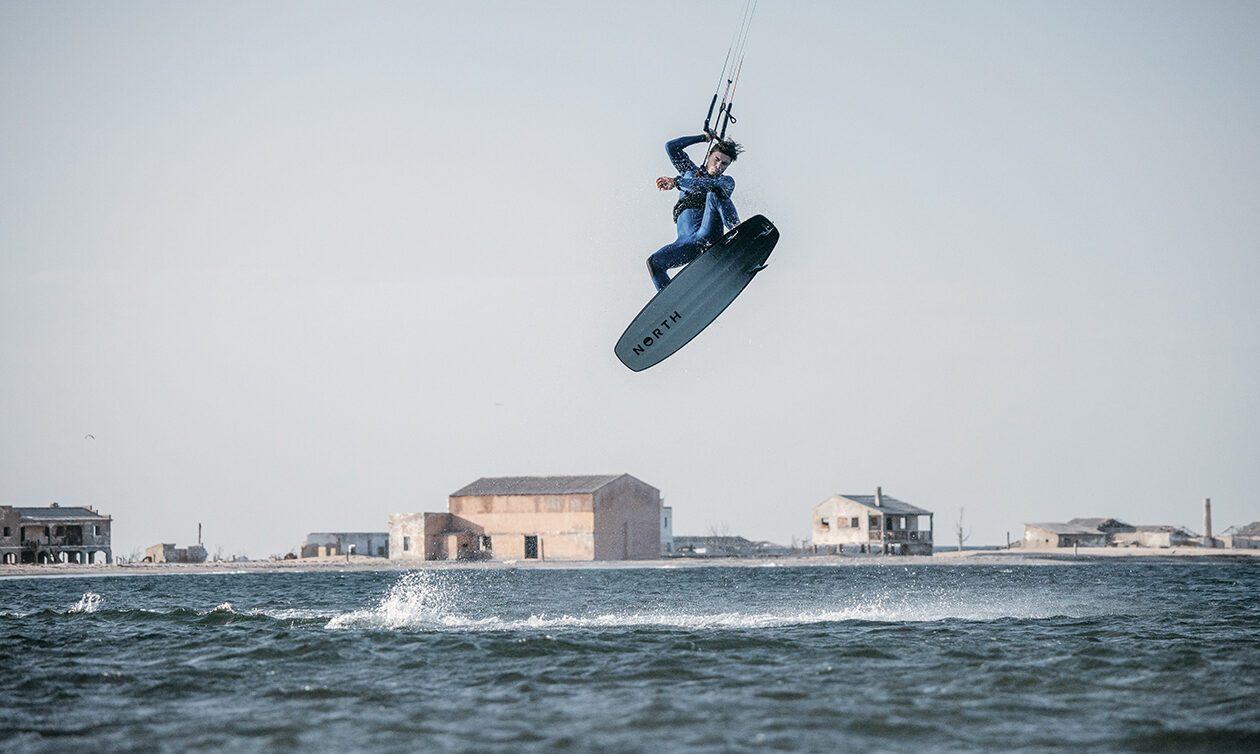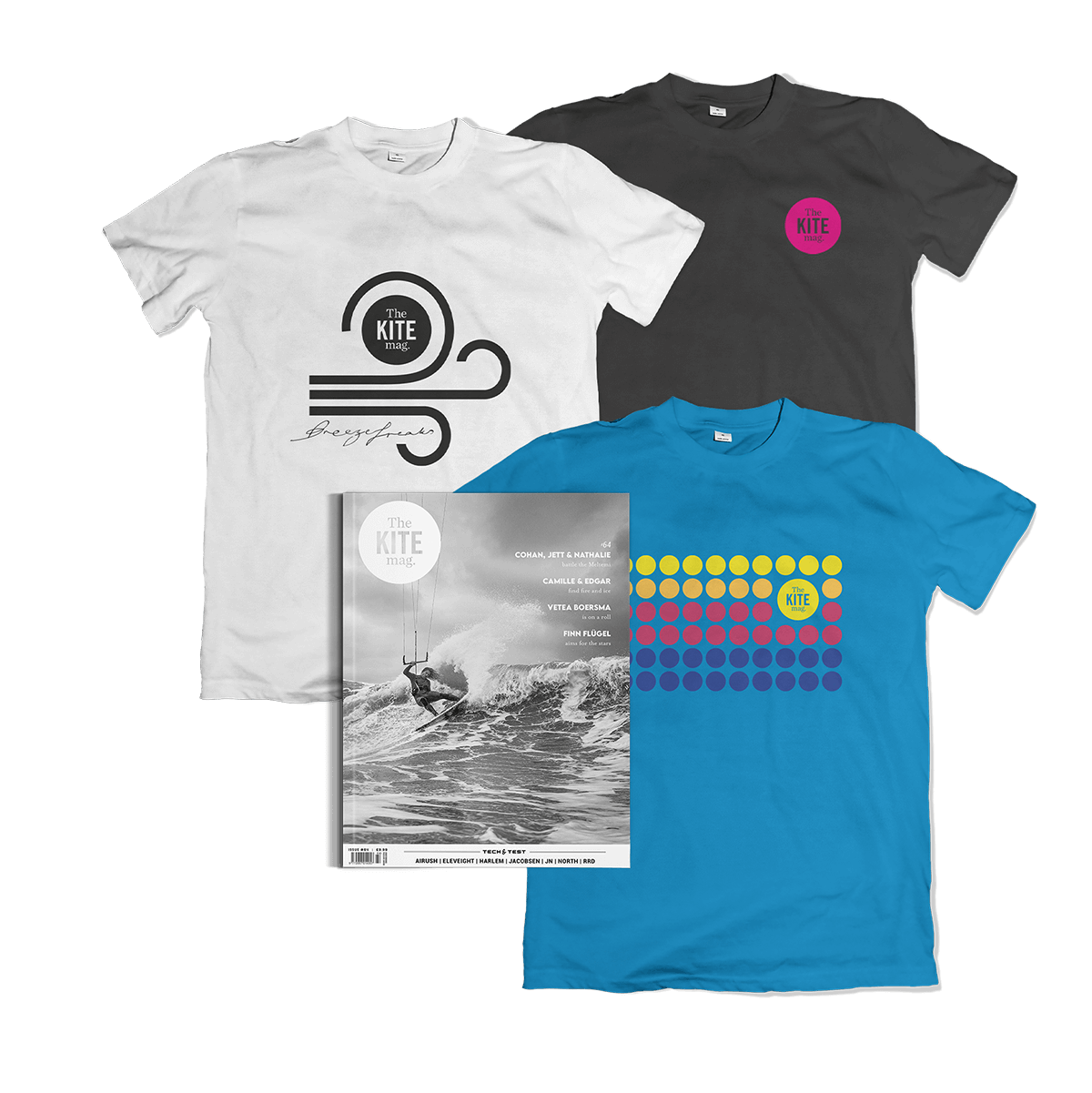Graham’s words hung in the air as we huddled in a Luanda hotel, where our journey began. “In my head, I was already saying that if this trip is too dangerous, I’m not doing it,” he admitted.
A local had told us that Baía dos Tigres had waters infested with tiger sharks, the same waters we’d planned to cross by kite. Though just a rumor, the other things we’d heard didn’t help… winds that mimic the howls of beasts, sighting of hyenas and packs of wild dogs mistaken for tigers… “I’d never heard of the place before, and when we found out more about it, it got scarier by the day,” Ozzie said. Not to mention the total insanity of getting to Baía dos Tigres itself. Rarely traversed, the path to the island is known as the Death Acre and is one of the most dangerous coastal passages in the world. It’s essentially a narrow stretch of beach along the Namib desert, an area the locals have dubbed ‘Os Riscos’, The Risks. The beach is hemmed in by relentless shorebreak on one side and the biggest dunes on the planet on the other. At high tide, the path is impossible – the waves break onto the dunes and leave your car sunken in the mud flats. Stories were abundant of travelers who’d been caught at high tide, escaping their cars laden with gear, which were swallowed by the ocean. Some said poor timing was the downfall, whereas others said it would just come down to luck. What was clear, though, was the danger. It was a place that had claimed lives and seemed poised to do so again. All this, a gateway to the island.
Baía dos Tigres, far removed from any romantic notions, is an island with a ghost town, sitting desolate off the Angolan coast. Established by the Portuguese in 1860, drawn by its marine bounty, it flourished into Angola’s prime fishing hub before the mid-20th century. This once-thriving village had it all: fisheries, homes, a chapel, school, hospital, post office, and even a theater. Now, it stands as a silent testament, its structures slowly yielding to time and the unforgiving desert winds. Back then, Baía dos Tigres wasn’t an island. A thin stretch of sand dunes kept it linked to the mainland. This changed in 1962 when a Kalema (a fierce African surf) with 10m+ waves severed the connection. The surging waters also ruptured a vital freshwater pipeline from the Cunene River, leaving the island isolated. By 1975, amid escalating tensions of a civil war, most of the European inhabitants had abandoned the town.
The three-day trip was carefully planned around low tide. We took off in three 4x4s, guided by Tiaan and Donovan. Alongside were Jop and Kyle, our cameramen, and the riders: Camille, Ozzy, and Graham. The expedition was organized and led by Matt, who grew up in the region, explored it with his parents as a child, and had worked there since he was 18. With over a decade of experience, Matt had always recognized the area’s potential for kiting, but he had never found the right team for such an endeavor – until now. “You have to be prepared,” Graham emphasized. “You need everything from fresh water to showering water, to food rations per day and medical supplies. You need compressors to let tires down to repair punctures. If anything goes wrong, there’s no help coming.” As we drove through national parks, the sense of being enveloped by the wild was undeniable. “You don’t see any wildlife until you hit the coast. There are sharks everywhere, shark nets, fishermen pulling sharks out,” Camille described.
We got to Camp Horror, named after the many cars that had sunk there. Despite this, we were feeling upbeat. We ended up sleeping under the stars – it was too windy to pitch our tents anyway – and we’d wake up in the morning covered in sand. “You would just go to bed in your board shorts, sleep in the desert, wake up covered in salt and sand, shake it off, jump back in the ocean, rinse and start again,” Ozzie said. On days with no wind or waves, we’d find our own entertainment. Graham came up with wakeboarding, towed by our car along the shore. And those 60-meter dunes? They were perfect for climbing to catch the sunset, sledding down, and even some crazy leaps. Pure, unadulterated fun. One evening, we set up a night kite session, with cars parked and their headlights flooding the water. “We were just doing tricks, in the pitch black with fish jumping all around you,” Graham reminisced. At one point on our journey, we drove past this massive shipwreck, and our guide tipped us off about it being a prime fishing spot. Skeptical about a quick catch, we went for it. To our surprise, the fish bit immediately – we caught 14 in just half an hour. “Camille was over the moon catching his first fish,” Ozzie recalled with a grin. Among our catches was a Garrick, a fish so rare it’s likened to a unicorn among fishermen. “We released it, of course. We only kept two fish for dinner that night.”
Successfully reaching Base Camp marked a significant moment. We were ready for the final leg of our journey – a 12km kite crossing to Baía dos Tigres, camping there overnight. Each of us, equipped with a kite, pump and a backpack full of essentials, faced a daunting journey with the island barely visible in the distance. “It was like kiting into the abyss,” Graham described, “and we discussed whether it was too risky of a crossing.” Being on the island meant complete radio silence, cutting us off from immediate help. “The ‘what ifs’ were endless, from losing wind to dealing with strong currents or equipment failure. And if anything did go wrong, and you’d have to drag one of us back in a downwind position, it would probably take you about four to six hours to get back.” Despite the risks, our confidence grew as we prepared. The six of us, leaving Tiaan and Donovan at Base Camp, did the crossing successfully, which took about an hour and a half.


